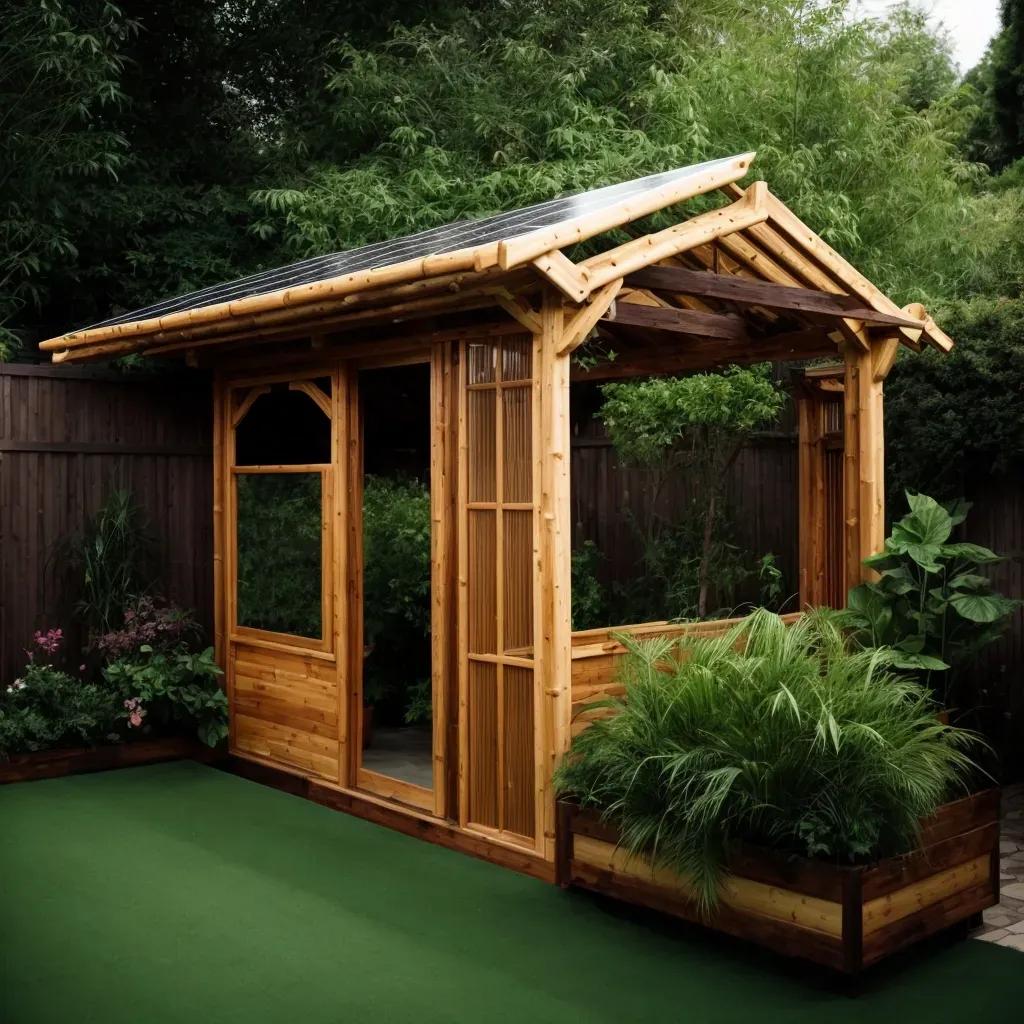Imagine stepping out onto your patio, shielded by a gable cover that not only provides protection from the elements, but also reflects your commitment to the environment.
As you gaze up at the sturdy structure above you, you may wonder what materials were used to create this eco-friendly oasis.
Well, look no further, because we’ve got four fantastic options that not only offer sustainability, but also add a touch of elegance to your outdoor space.
So, get ready to discover the perfect eco-friendly materials for your gable patio cover, and prepare to transform your outdoor living area into a sustainable haven that will leave your friends and neighbors green with envy.
Recycled Aluminum
Recycled aluminum is a sustainable option for gable patio covers, providing durability and environmental benefits. When it comes to construction, recycled aluminum is widely used in various outdoor structures due to its numerous advantages.
One of the key benefits of using recycled aluminum in outdoor structures, such as gable patio covers, is its strength and durability. Aluminum is known for its resistance to rust and corrosion, making it ideal for withstanding the elements and ensuring a long lifespan for your patio cover.
Bamboo
Bamboo is a versatile and sustainable material choice for gable patio covers. When it comes to creating an eco-friendly outdoor space, bamboo is a fantastic option. Not only does it provide a natural and organic feel, but it also offers several benefits for your patio cover project.
One of the main advantages of using bamboo for gable patio covers is its sustainability. Bamboo is a renewable resource that grows rapidly, making it an environmentally friendly choice. Unlike traditional wood materials, which take years to grow, bamboo can be harvested in just a few years, making it a more sustainable option.
Polycarbonate
When considering alternative materials for gable patio covers, another eco-friendly option to consider is polycarbonate. Polycarbonate patio covers have several advantages that make them a popular choice among homeowners.
First and foremost, polycarbonate is a highly durable material that can withstand extreme weather conditions. This means that your patio cover will be able to protect you and your outdoor furniture for many years to come.
Additionally, polycarbonate is lightweight, making it easy to install and transport. Its transparency also allows natural light to filter through, creating a bright and inviting outdoor space.
However, it’s important to consider the disadvantages of polycarbonate patio covers as well. One drawback is that they aren’t as aesthetically pleasing as other materials such as wood or aluminum. They have a more industrial look, which may not fit the desired aesthetic of every homeowner.
Additionally, polycarbonate can be prone to scratching, so it’s important to handle the material with care during installation and maintenance.
When installing a polycarbonate patio cover, it’s essential to follow a few tips to ensure a successful installation. Firstly, make sure to choose the right thickness of polycarbonate sheet for your specific needs. Thicker sheets are more durable and provide better insulation, but they may also be more expensive.
Secondly, use proper installation techniques such as pre-drilling holes and using appropriate fasteners to prevent any damage to the material.
Lastly, consider adding UV protection to your polycarbonate patio cover to prevent discoloration and degradation from exposure to the sun’s rays.
Cedar
Cedar is a popular choice for gable patio covers due to its natural beauty and durability. Not only does it provide a warm and inviting atmosphere to your outdoor space, but it also offers several benefits for gable patio covers.
One of the main advantages of using cedar is its resistance to rot and decay. This means that your gable patio cover will last for years without the need for frequent repairs or replacements. Additionally, cedar is known for its ability to withstand harsh weather conditions, making it a reliable option for outdoor structures.
Another benefit of cedar is its natural resistance to insects and pests. This means that you won’t have to worry about termites or other critters damaging your patio cover. It’s a low-maintenance material that requires minimal effort to keep it looking its best.
To maintain your cedar gable patio cover, regular cleaning and sealing are recommended. Sweep away any debris and use a gentle cleanser to remove dirt and grime. Applying a sealant every few years will help protect the wood from the elements and maintain its natural beauty.
Recycled Plastic
Recycled plastic offers a sustainable and eco-friendly alternative for gable patio covers. By using recycled plastic for your patio cover, you can contribute to the reduction of waste and help protect the environment.
One of the benefits of using recycled plastic is its durability. It’s designed to withstand harsh weather conditions, such as rain, snow, and UV rays, without rotting or fading. This means that your gable patio cover made from recycled plastic will last for a long time, saving you money in the long run.
When comparing the durability of recycled plastic with other eco-friendly materials for gable patio covers, recycled plastic stands out. It’s known for its strength and resistance to damage, making it a reliable choice for outdoor structures. Unlike wood, which can warp and decay over time, recycled plastic maintains its integrity and appearance.
Key Takeaways
- Recycled aluminum is a durable and environmentally friendly option for gable patio covers, as it is resistant to rust and corrosion and reduces waste.
- Recycled plastic provides a sustainable alternative, with the ability to withstand harsh weather conditions without rotting or fading.
- Bamboo offers a natural and organic feel, being a rapidly renewable resource that is lightweight yet sturdy and resistant to warping, cracking, pests, and rot.
- Cedar provides natural beauty and durability, being resistant to rot, decay, harsh weather conditions, insects, and pests, making it a low-maintenance material for gable patio covers.

